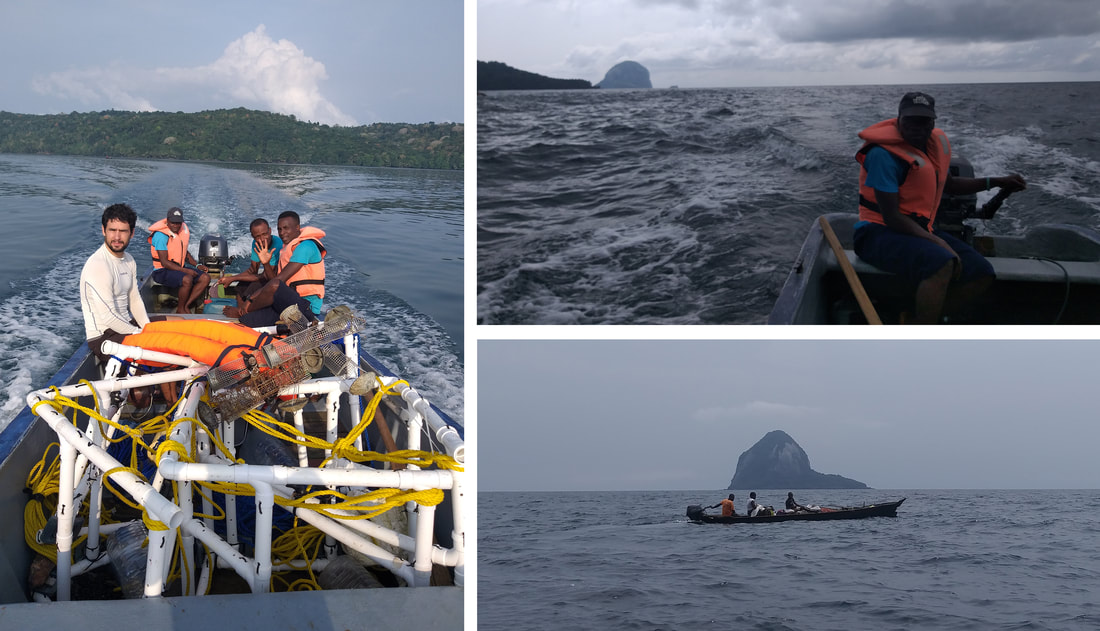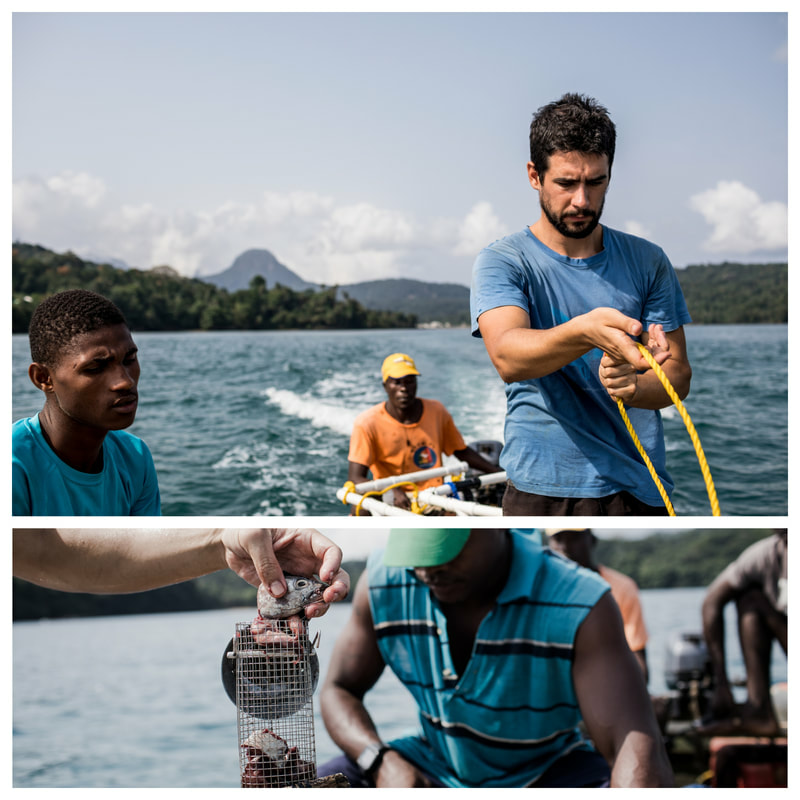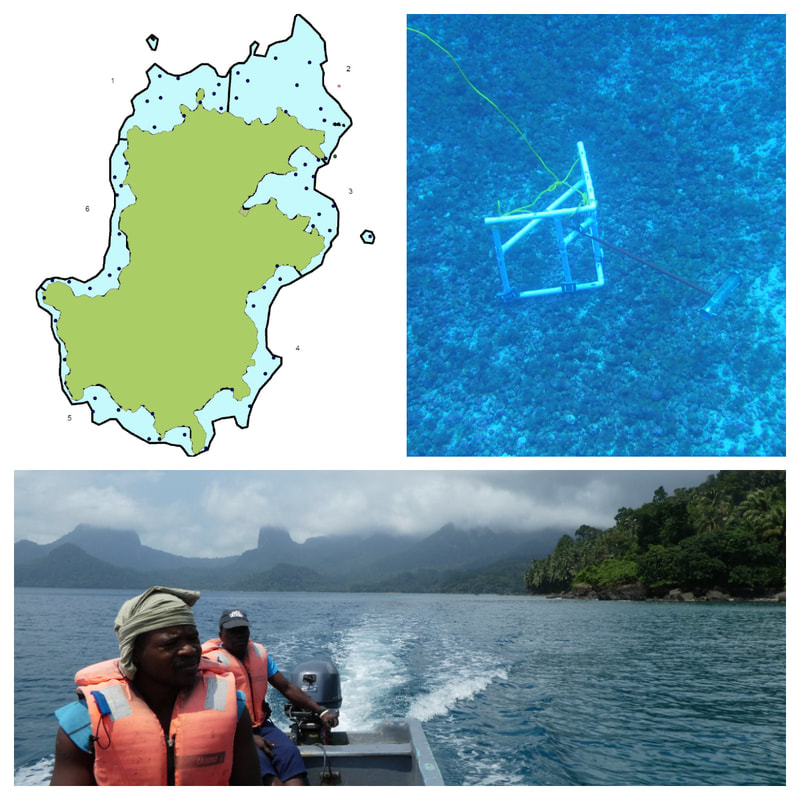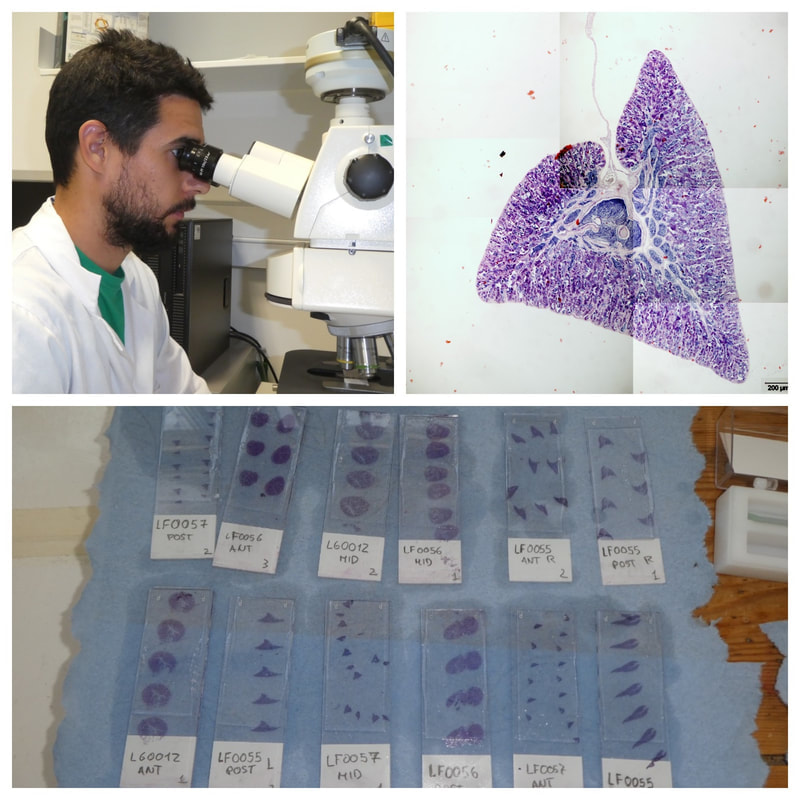|
I was interviewed on March 1, 2019 to talk about the biodiversity monitoring currently being done in Príncipe Island using Baited Remote Underwater Videos. You can listen to the whole interview here!
1 Comment
Originally published in omaliprincipeen.weebly.com
On Saturday, 9th of March we had the last BRUV sampling day of the project! Since April 2018, 260 hours of video have been recorded over 28 days of field work. We have already identified over 95 species in the cameras, including sharks and rays. For the next two months we will finish analysing all the videos to understand the distribution of fish species around the island, so as to identify priority areas for conservation and management. BRUV sampling will continue for the next years both in São Tomé and Principe! Shark attack! Sometimes losing your equipment is completely worth it! We are currently analysing the videos of December's sampling round. BRUV surveys are being used in Principe Island as part of the project Omali Vida Nón to understand the spatial patterns of fish distribution and inform managers. Originally published in omaliprincipeen.weebly.com
The second BRUV sampling round has already started! This December we will be dropping cameras in 60 sampling points around the island, plus three more cameras in a new site: Tinhosas Islets! Tinhosas are located 20 km south of Principe, and host one of the biggest populations of nesting seabirds in the Gulf of Guinea. Fishers use this area, so it is important to assess its biodiversity. We are looking forward to analysing the videos: we have already found species that are not present in Principe island! BRUV video of the week! It is always fun to find moray eels like this Enelychore nigricans in the BRUV surveys. We are currently analysing the videos recorded in the last sampling round of Omali Vida Nón's BRUV surveys!. We are using Baited Remote Underwater Video (BRUVs) around Principe Island (São Tomé and Príncipe) to understand the spatial patterns of fish distribution and inform management. This octopus' meal got a bit dramatic by the end (turn the volume on!). We have started analysing the videos recorded in the last sampling round of Omali Vida Nón's BRUV surveys! We are using Baited Remote Underwater Video around Principe Island (São Tomé and Principe) to understand the spatial patterns of fish distribution and inform management. Originally published in omaliprincipeen.weebly.com, available here.
From July 16 to August 10 we completed the first round of BRUV surveys! BRUVs (Baited Remote Underwater Video surveys) are a non-invasive methodology used to record fish presence, relative abundance and behaviour. Sixty sampling points, randomly selected, were surveyed and over 90 hours of videos have been recorded. This constitutes the first successful sampling round of a monitoring strategy that will continue over the next five years. We are looking forward to start analysing the videos! Over the next months we will be watching the videos and recording species’ presence and abundance using the MaxN metric (maximum number of individuals per frame). This information will be used to design a potential network of Marine Protected Areas. We already got some spectacular footages and they will be available online soon! How to annoy barracudas using Baited Remote Underwater Video. This one popped in after an hour of no fish at all, so it made me especially happy. Originally published in omaliprincipeen.weebly.com, More info here
From the 28th of May until the 8th of June Omali Vida Nón did the first histological analysis of the gonad samples of Lutjanus fulgens that had been collected in Principe during April and May 2018. This is part of the fish maturity study conducted in partnership with Forever Principe, so as to better understand the reproductive biology of this predatory species and inform fisheries management. The histological analysis was conducted at Prof. Charles Tyler’s lab at the University of Exeter, under the supervision of Dr. Anke Lange. Samples are fixed in wax, sliced in the microtome and stained on haematoxylin-eosin, and then analysed on the microscope. Through this analysis we aim to validate the macroscopic assessment of the maturity of the gonads done in the field and understand the gonad development and maturation for this understudied species. Originally published in omaliprincipeen.weebly.com, know more here BRUV surveys are starting again! We are using Baited Remote Underwater Cameras around Principe Island to understand spatial patterns of fish distribution, information that will be used to inform management of Principe’s fisheries. In May we did some fieldwork and were able to get interesting footage as well as refining the protocol for deploying the BRUV devices. Below you can watch a short film showing all the steps for deploying the cameras, as well as some of the species identified on camera. This study is funded by Darwin Initiative, Halpin Trust and Forever Príncipe. Thanks to all funders! |



